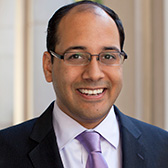Read Advisory Board's take and learn what you can do to keep up with rising physician compensation
Orthopedic surgeons have the highest average annual compensation of 23 provider specialties, according to Modern Healthcare's 25th annual Physician Compensation Survey.
For the survey, Modern Healthcare gathered compensation data from 12 survey firms, including the American Medical Group Association (AMGA) and the Medical Group Management Association.
The highest paid physicians
Of the 23 specialties, orthopedic surgeons made the most at an average of $569,009, while pediatricians made the least, at an average of $234,056.
Here's the full list:
According to Modern Healthcare's Steven Ross Johnson, this is the second year in a row that orthopedic surgeons have topped the list.
A broader trend of stagnant compensation rates
Between 2016 and 2017, physician compensation rates overall remained fairly stagnant, Ross Johnson writes. However, emergency medicine, family practice, hospitalists, and internal medicine all saw their average pay rise by over 3% year-to-year.
According to Fred Horton, president of AMGA, the stagnation in physician compensation is partially rooted in the industry shift toward value-based care, as much of physician compensation comes from personal productivity. "When you have flat or lower productivity than what we've seen, the net result is that compensation is flat," he said. "We haven't seen that in the past."
Another contributing factor could be that more physicians work at hospitals—where a large portion of their compensation is based on salary—than ever before, Ross Johnson writes. An analysis from the Physicians Advocacy Institute and Avalere Health released in March found the number of doctors employed by a hospital increased by more than 63% from 2012 to 2016.
Similarly, a report from the American Medical Association released earlier this year found 53% of a physician's compensation was tied to salary in 2016 and just 32% was tied to productivity (Ross Johnson, Modern Healthcare, 7/21).
Advisory Board's take


Hamza Hasan, Practice Manager, Medical Group Strategy Council, and Sarah O'Hara, Senior Consultant, Medical Group Strategy Council
We were particularly interested in two of the trends highlighted in this Modern Healthcare report:
1. The decrease in straight productivity-based compensation models
2. The rise in compensation for physicians in primary care specialties
Decrease in straight productivity-based salary models
The shift away from tying physician pay to personal, per-click productivity has been reflected in our research. We've found organizations are moving from these models because they want to:
- Respond to rising consumerism by paying physicians (primarily PCPs) for work that is not directly reimbursed but still important for building patient loyalty;
- Enhance medical group growth by decreasing the incentive (primarily for specialists) to "hoard" patients in order to enhance their productivity metrics; and
- Prevent physician and administrator burnout by shifting away from a transactional relationship to a more collaborative culture (where physicians don't feel as though they have to be paid piecemeal in order to engage with organizational initiatives)
All of these factors are pushing organizations to adopt a model with a greater percentage of guaranteed salary.
Unlike in the 1990s when many hospitals paid physicians a straight salary with no incentive for performance—and then lost considerable revenue when production fell—today's salary models often continue to incentivize productivity in some way, as well as quality and other outcomes.
“Shifting to guaranteed salary...makes an important psychological difference for physicians.”
However, the trend is making a difference—we've heard from medical group leaders that shifting to guaranteed salary, even if conditioned on meeting production expectations, makes an important psychological difference for physicians.
Overall, this trend signals a change in values, indicating that medical groups' priorities are evolving from a desire for volume at all costs toward an interest in a more balanced approach.
The spike in pay for primary care doctors
The report also highlights that while the move to salary-based models may be slowing compensation growth among all specialties, compensation among primary care specialties is growing rapidly.
This finding is also consistent with our research. We've heard from many organizations, such as physician aggregators, independent multi-specialty groups and hospital-affiliated groups, that they are investing more in primary care. However, given the shortage of primary care physicians, groups often have to offer higher compensation.
As these groups continue to grow and adopt a more population-health based approach, we expect pay levels among these providers to continue to grow.
How can medical groups keep up with rising costs?
“Physician compensation is like college tuition: We all realize the rising costs are not sustainable, but no one knows what to do.”
While many medical group leaders have expressed concern to us that rising physician pay rates can't keep up with reimbursement, they are loathe to take active steps to bring compensation down because of the potential effect on their ability to attract and retain providers. As one administrator told us, "Physician compensation is like college tuition: We all realize the rising costs are not sustainable, but no one knows what to do."
It remains to be seen whether the market will ultimately force a downturn in physician wages across the board. For now, however, one solution for groups concerned about rising physician wages and recruitment difficulties may be to consider what non-financial benefits they can leverage to attract and retain providers. These changes can have a large impact. For instance, medical groups can help their providers achieve a more sustainable work-life balance, which, in surveys of young millennial physicians, is ranked as the most important concern in finding a satisfying professional practice.
To learn more about our research on a guaranteed salaries, and read more about the organizations leading this charge, read our report from the frontier of physician compensation.
To learn more about how you can attract and retain physician talent—without competing solely on compensation—read our report on winning the war for physician talent.
Get the ReportDon't miss out on the latest Advisory Board insights
Create your free account to access 2 resources each month, including the latest research and webinars.
Want access without creating an account?
You have 2 free members-only resources remaining this month remaining this month.
1 free members-only resources remaining this month
1 free members-only resources remaining this month
You've reached your limit of free monthly insights
Become a member to access all of Advisory Board's resources, events, and experts
Never miss out on the latest innovative health care content tailored to you.
Benefits include:
You've reached your limit of free monthly insights

